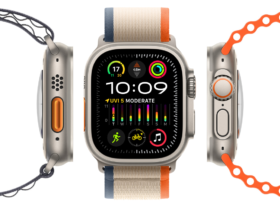Starting an online store with Shopify is an exciting venture. With its user-friendly interface, extensive customization options, and built-in eCommerce tools, Shopify is an excellent platform for entrepreneurs. However, many store owners make crucial mistakes that can hurt their sales and SEO rankings. If you want to improve your store’s performance and boost conversions, avoiding these common errors is essential.

1. Ignoring Shopify SEO Optimization
One of the biggest mistakes new Shopify store owners make is neglecting Shopify SEO. Without proper Shopify SEO optimization, your store won’t rank well on Google, making it difficult for potential customers to find you. To fix this:
- Use SEO-friendly URLs that clearly describe your product pages.
- Optimize product titles and descriptions with high-ranking Shopify keywords.
- Add alt text to images to improve visibility in Google Image search.
- Write engaging meta descriptions to increase click-through rates.
2. Choosing the Wrong Shopify Theme
Your Shopify theme affects user experience, page speed, and mobile responsiveness. Some Shopify store owners choose themes based on aesthetics without considering performance. To fix this:
- Use a mobile-friendly Shopify theme that loads quickly.
- Avoid overly complex designs that slow down your website.
- Test different themes and choose one optimized for Shopify conversions.
3. Neglecting Mobile Optimization
Over 50% of eCommerce traffic comes from mobile devices, yet many Shopify store owners fail to optimize their stores for mobile users. Shopify mobile optimization is crucial for SEO and conversions. To fix this:
- Use a responsive Shopify theme that adapts to different screen sizes.
- Ensure buttons and text are easy to click and read on mobile.
- Reduce large image files to improve loading speed.
4. Poor Product Descriptions and Images
Your product pages need high-quality content to convert visitors into buyers. Generic descriptions and low-resolution images can drive potential customers away. To fix this:
- Write unique, SEO-optimized product descriptions that highlight benefits and features.
- Use high-quality product images with multiple angles.
- Implement product videos to enhance user experience and build trust.
5. Ignoring Shopify Page Speed Optimization
Slow-loading pages can harm your Shopify SEO rankings and increase bounce rates. Shopify store owners often overload their websites with unnecessary apps and large images, slowing down their store. To fix this:
- Use Shopify’s built-in speed optimization tools.
- Compress images without sacrificing quality.
- Minimize the use of heavy third-party apps.
- Enable Shopify’s lazy loading for images to improve speed.
6. Not Setting Up a Clear Navigation Structure
A confusing website layout can frustrate users and lower conversions. Shopify navigation optimization improves user experience and helps search engines index your pages better. To fix this:
- Use a simple and well-structured menu with clear categories.
- Add a search bar to help users find products quickly.
- Optimize your internal linking structure to improve Shopify SEO ranking.
7. Skipping the Shopify Blog Feature
Many store owners focus only on product listings and ignore content marketing. However, a Shopify blog can drive traffic, build brand authority, and improve SEO. To fix this:
- Regularly post SEO-optimized Shopify blogs related to your niche.
- Use long-tail Shopify keywords in blog titles and content.
- Share blog posts on social media to increase visibility.
8. Not Implementing Shopify Schema Markup
Shopify schema markup helps search engines understand your store’s content better. This can enhance your search results with rich snippets like product ratings and prices. To fix this:
- Add structured data markup for products, reviews, and FAQs.
- Use Shopify SEO apps that automatically generate schema markup.
- Test your structured data using Google’s Rich Results Test.
9. Ignoring Shopify Abandoned Cart Recovery
Abandoned carts are a significant issue for eCommerce stores. Without a proper recovery strategy, you lose potential sales. To fix this:
- Enable Shopify’s abandoned cart recovery emails.
- Offer discounts or incentives to encourage customers to complete their purchase.
- Use retargeting ads to bring back interested shoppers.
10. Not Using Shopify Analytics for Data-Driven Decisions
Many Shopify store owners don’t use Shopify analytics effectively, missing opportunities to optimize performance. To fix this:
- Regularly check Shopify Reports to analyze sales trends.
- Use Google Analytics to track customer behavior and conversions.
- A/B test different strategies to improve your Shopify conversion rate.
Conclusion
Running a successful Shopify store requires avoiding these common mistakes and continuously optimizing your Shopify SEO strategy. By improving page speed, enhancing mobile usability, writing compelling product descriptions, and leveraging analytics, you can significantly boost your store’s performance. Apply these fixes today to increase traffic, improve conversions, and grow your eCommerce business.


















Leave a Reply